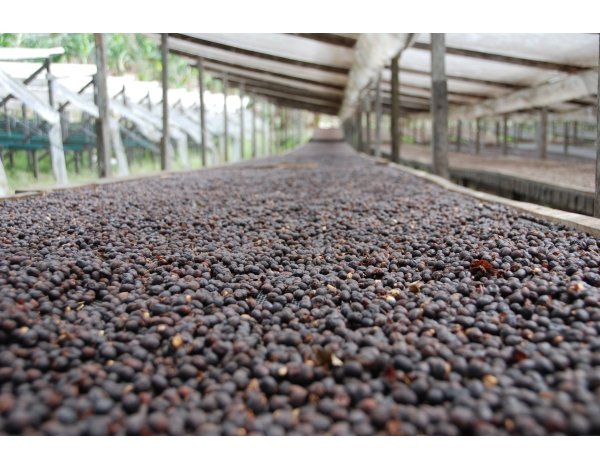





Panama
250g
Cup Notes
Papaya / Orange / Blueberry / Raisin / Dried Plum / Juniper suggested for espresso and filter
Terroir Best Lotompetition Series
Quality Score: 90.50
when we roast
We freshly roast to order all coffees on Monday, Wednesday and Friday (excluding national holidays), and ship the same day! Cut-off time is 11:59pm (UTC+1) of the day before the roast day. *We only ship whole beans*
Finca Hartmann is a family enterprise, in the 3rd generation and located in Santa Clara, Renacimiento. It consists of 2 farms – Santa Clara Finca Hartmann and Ojo de Agua, located between 1.300 and 2.000 mts above sea level with nearly 100has of forest reserves bordering on the Parque Nacional de La Amistad. The coffee is grown under the shade of native rainforest trees that have been there for many years.
Alois Strasil Hartmann, born in 1891 in the region of Moravia, then Austrian-Hungarian empire (you might understand our personal affinity to this finca), laid the ground work for Finca Hartmann, which was founded by his son, Ratibor Hartmann, in 1940. Alois came to Panama in 1912 in search of adventure, which made him follow the telegraph lines all the way to Volcan instead of staying in Panama City. He was the first resident of Volcan, where he settled, married Susana Troetsch, daughter of a German immigrant and took care of 2000 cattle and 1000 donkeys for a certain Mr. Landberg. He started a coffee farm and later moved to Santa Clara where he had another coffee farm.
Today Finca Hartmann is a family enterprise – each member of the family is passionately involved in the management and performs a different function in the growth, production and tourism of the farm. Coffee for them is a way of living, their culture, their family – a lot of work, but also a lot of love. Their employees come return every year, as do their buyers, because they like their vision: work together with nature, work the land without destroying it.
Pacamara is a hybrid created at the end of the 1950s in El Salvador by the Institute for Coffee Research (ISIC). Created by crossing the Pacas variety (an El Salvadoran mutation of Bourbon) with Maragogype and it gets its name from the first 4 letters of each of its parents.
It shares traits from both parents. It’s relatively short stature and high productivity is inherited from the Pacas variety, and, like the Maragogype, Pacamara is known for its large cherries. It tends to be more productive than the Maragogipe and is known to produce an attractive cup
Very high susceptibility to coffee leaf rust. Variety not homogenous; plants are not stable from one generation to the next.
Dry process seems simple: pick the fruit, lay it out in the sun until it turns from red to brown to near-back, and then hull off off the thick, dried outer layer in one step to reveal the green bean. It is a method suited to arid regions, where the sun and heat can dry the seed inside the intact fruit skin.
It's often referred to as "natural coffee" because of its simplicity, and because the fruit remains intact and undisturbed, a bit like drying grapes into raisins. Since it requires minimal investment, the dry process method is a default to create cheap commodity-grade coffee in areas that have the right climate capable of drying the fruit and seed.
But it’s a fail in humid or wet regions. If the drying isn't progressing fast enough, the fruit degrades, rots or molds.
Dry-processed coffees can also be wildly inconsistent. If you want a cleanly-fruited, sweet, intense cup, dry process (DP) takes more hand labor than the wet process. Even the most careful pickers will take green unripe or semi-ripe coffee off the branch as they pick red, ripe cherry. If these are not removed in the first days of drying, the green turns to brown that is hard to distinguish from the ripe fruit.